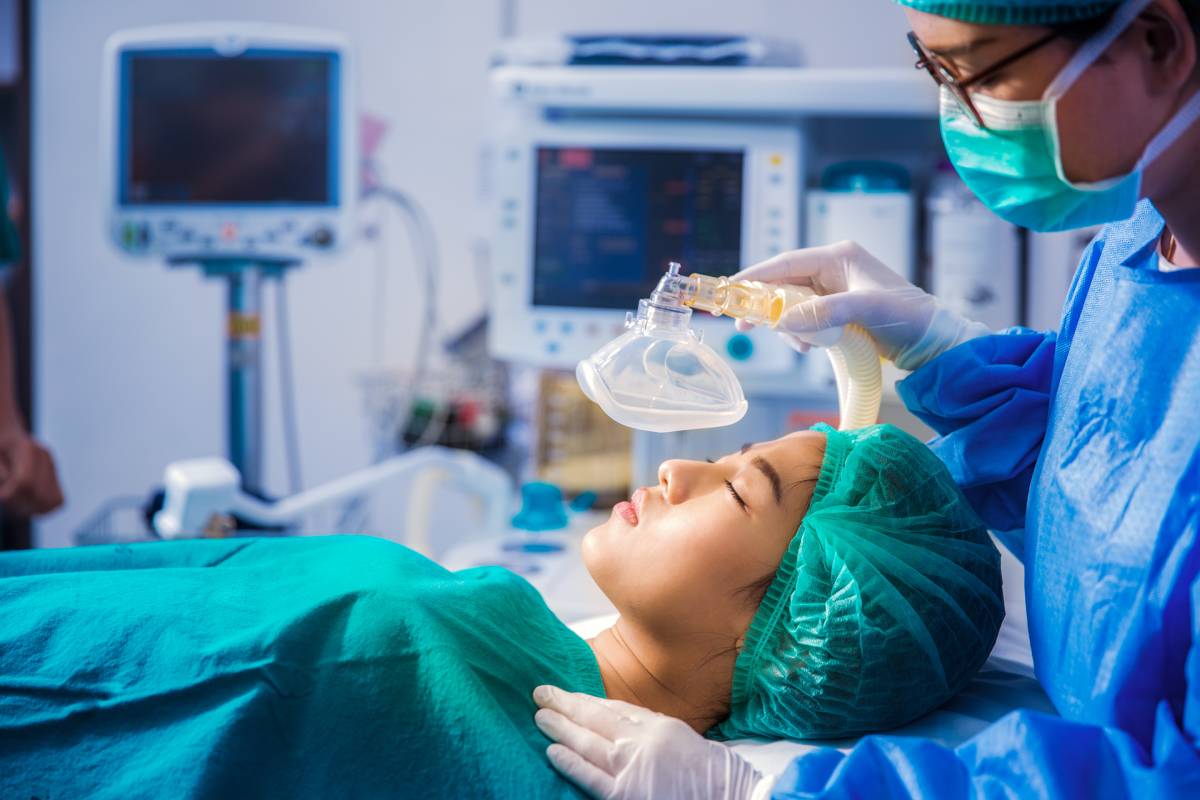Respiratory Monitoring During MAC

Monitored anesthesia care (MAC), defined by the American Society of Anesthesiologists as “a specific anesthesia service performed by a qualified (trained) anesthesia provider, for a diagnostic or therapeutic procedure” that encompasses pre-, intra-, and post-procedure care by the anesthesia provider. [1] It is generally considered to focus on sedation, ranging from light to deep. Crucially, what distinguishes MAC from sedation alone is thorough monitoring and support of vital functions, especially respiratory function. [2]
MAC is a valuable component of perioperative patient care that consolidates important facets of care into a comprehensive, anesthesia provider-led process. While, in moderate sedation, the patient is not expected to be sedated to the extent that their airway integrity would be compromised or that anything will go amiss with their cardiovascular or respiratory functioning, the application of MAC allows for the seamless transition between moderate sedation to general anesthesia during a procedure when needed. MAC requires that the anesthesia provider give full attention to monitoring respiratory events during the procedure and have the capability to intervene to rescue a patient’s airway should a sedation-induced respiratory failure event arise. The ability to optimize sedation levels during a procedure can be immensely beneficial for more invasive procedures where such adjustments may become necessary or in cases where the patient is particularly fragile or vulnerable. Thus, having a qualified MAC provider present in cases where such flexibility is conducive to the success of the procedure is extremely beneficial. [1]
The use of MAC both in- and outside of the operating room was evaluated for its safety and effectiveness by Sohn and Ryu in the Korean Journal of Anesthesiology in 2016. They characterized the key features of MAC as preoperative patient evaluation, intraoperative monitoring, monitoring the level of consciousness, patient satisfaction score (Iowa Satisfaction with Anesthesia Scale), and the use of systemic sedatives and analgesics to provide patients with additional comfort during the procedure. The authors concluded that, in many cases, the use of MAC was preferable over general or regional anesthesia both due to its relative cost-effectiveness and because it seems to facilitate more efficient post-procedure recovery for the patient. However, they do caution that many factors (both of the patient themselves as well as of the various sedatives and analgesics applied during the procedure) should be taken into account when applying MAC and that a sufficiently experienced anesthesiologist, as well as proper equipment for monitoring the patient’s airway and oxygen levels and the means to correct any potential central respiratory depression or airway obstruction, is required for MAC to be an appropriate method to apply to any particular procedure. [3]
Various infusions of different sedatives have been tested for their efficacy in MAC since the service was developed. Studies over the past decade have indicated that dexmedetomidine is an effective sedative to be used in MAC, and recent (2021) data corroborates the suitability of dexmedetomidine, in particular when compared with propofol, another commonly applied anesthetic and sedative. [4,5] With the use of this effective agonist, and with the flexibility and overall patient safety and comfort that the respiratory monitoring and support provided by the qualified anesthesiologist present, MAC remains an excellent option above general anesthesia or moderate sedation in many patient cases.
References
(1) Statement on Distinguishing Monitored Anesthesia Care from Moderate Sedation Analgesia. https://www.asahq.org/standards-and-practice-parameters/statement-on-distinguishing-monitored-anesthesia-care-from-moderate-sedation-analgesia.
(2) Das, S.; Ghosh, S. Monitored Anesthesia Care: An Overview. J Anaesthesiol Clin Pharmacol 2015, 31 (1), 27–29. https://doi.org/10.4103/0970-9185.150525.
(3) Sohn, H.-M.; Ryu, J.-H. Monitored Anesthesia Care in and Outside the Operating Room. Korean J Anesthesiol 2016, 69 (4), 319–326. https://doi.org/10.4097/kjae.2016.69.4.319.
(4) Candiotti, K. A.; Bergese, S. D.; Bokesch, P. M.; Feldman, M. A.; Wisemandle, W.; Bekker, A. Y. Monitored Anesthesia Care with Dexmedetomidine: A Prospective, Randomized, Double-Blind, Multicenter Trial. Anesthesia & Analgesia 2010, 110 (1), 47–56. https://doi.org/10.1213/ane.0b013e3181ae0856.
(5) Srivastava, N.; Harjai, M.; Kumar, S.; Rai, S.; Malviya, D.; Tripathi, M. A Comparative Study of Dexmedetomidine and Propofol Infusion during Monitored Anesthesia Care (MAC) in Endoscopic Retrograde Cholangiopancreatography (ERCP): A Randomized Controlled Trial. Ain-Shams J Anesthesiol 2021, 13 (1), 48. https://doi.org/10.1186/s42077-021-00168-0.
